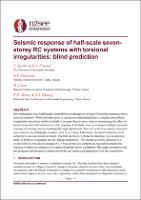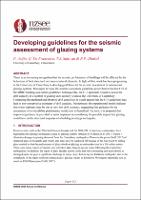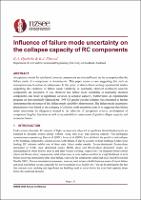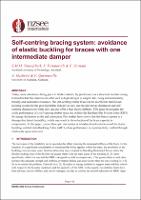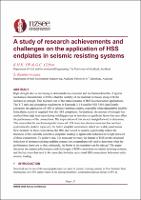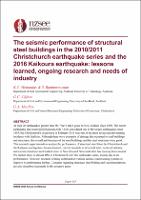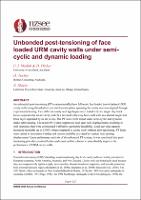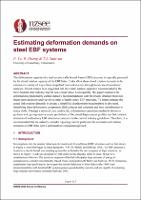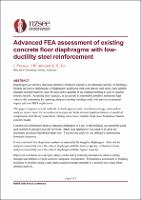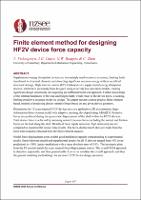Search
Now showing items 1-10 of 12
Seismic response of half-scale seven-storey RC systems with torsional irregularities: blind prediction
(New Zealand Society for Earthquake Engineering, 2020-04-22)
Past earthquakes have highlighted vulnerabilities to damage or collapse of building structures due to torsional response. While methodologies to capture torsional demand due to strength and stiffness irregularities have ...
Developing guidelines for the seismic assessment of glazing systems
(New Zealand Society for Earthquake Engineering, 2020-04-22)
There is an increasing recognition that the seismic performance of buildings will be affected by the behaviour of both structural and non-structural elements. In light of this, work has been progressing at the University ...
Influence of failure mode uncertainty on the collapse capacity of RC components
(New Zealand Society for Earthquake Engineering, 2020-04-22)
Acceptance criteria for reinforced concrete components are selected based on the assumption that the failure mode of a component is deterministic. This paper makes a case suggesting that such an assumption may be untrue ...
Self-centring bracing system: avoidance of elastic buckling for braces with one intermediate damper
(New Zealand Society for Earthquake Engineering, 2020-04-22)
Today, more attention is being given to timber material by practitioners as a structural member owing to benefits that this material can offer such as high strength to weight ratio, being environmentally friendly and ...
A study of current research achievements and challenges on the application of High Strength Steel (HSS) endplates in seismic resisting systems
(New Zealand Society for Earthquake Engineering, 2020-04-22)
High strength steel is increasing in demand due to economic and mechanical benefits. A typical mechanical characteristic of HSS is that the ductility of the material decreases along with the increase in strength. This has ...
The seismic performance of structural steel buildings in the 2010/2011 Christchurch Earthquake series and the 2016 Kaikoura earthquake: lessons learned, ongoing research and needs of industry
(New Zealand Society for Earthquake Engineering, 2020-04-22)
At least 20 earthquakes greater than Ms 7 have taken place in New Zealand since 1850. The recent earthquake that occurred in Kaikoura (Ms 7.8) is considered one of the largest earthquakes since 1855, but Christchurch's ...
Unbonded post-tensioning of face loaded URM cavity walls under semi-cyclic and dynamic loading
(New Zealand Society for Earthquake Engineering, 2020-04-22)
An unbonded post-tensioning (PT) system installed into full-scale face loaded (out-of-plane) URM cavity walls using threaded rod and steel anchor plates spanning the cavity was investigated through experimental testing. ...
Estimating deformation demands on steel EBF systems
(New Zealand Society for Earthquake Engineering, 2020-04-22)
The deformation capacity of a steel eccentrically braced frame (EBF) structure is typically governed by the chord rotation capacity of the EBF links. Codes allow these chord rotation demands to be estimated a variety of ...
Advanced FEA assessment of existing concrete floor diaphragms with low-ductility steel reinforcement
(New Zealand Society for Earthquake Engineering, 2020-04-22)
Diaphragms are primary structural elements which are crucial to the structural stability of buildings. Despite the known deficiencies of diaphragms reinforced with cold-drawn steel mesh, their reliable strength and ...
Finite element method for designing HF2V device force capacity
(New Zealand Society for Earthquake Engineering, 2020-04-22)
Supplemental energy dissipation devices are increasingly used to protect structures, limiting loads transferred to structural elements and absorbing significant response energy without sacrificial structural damage. High ...

